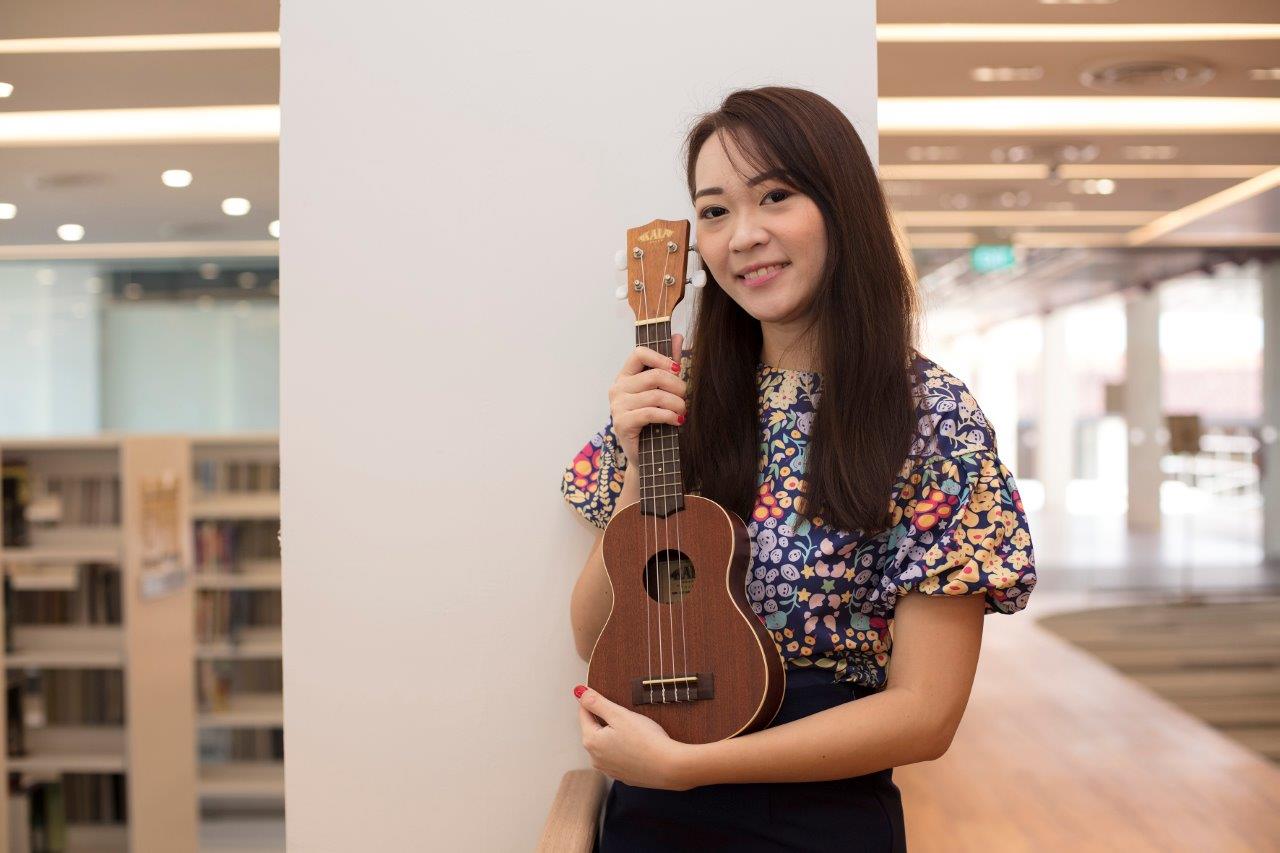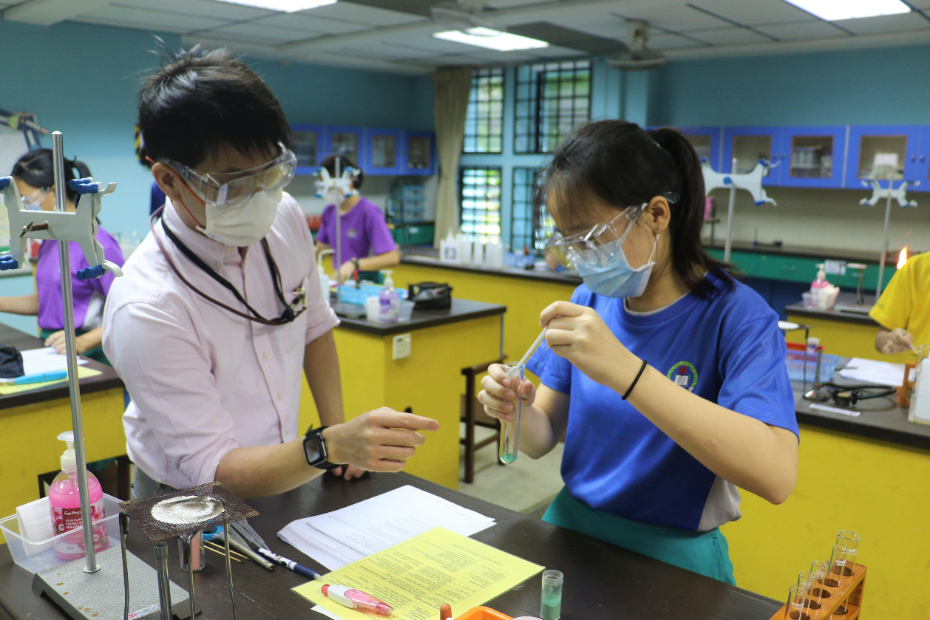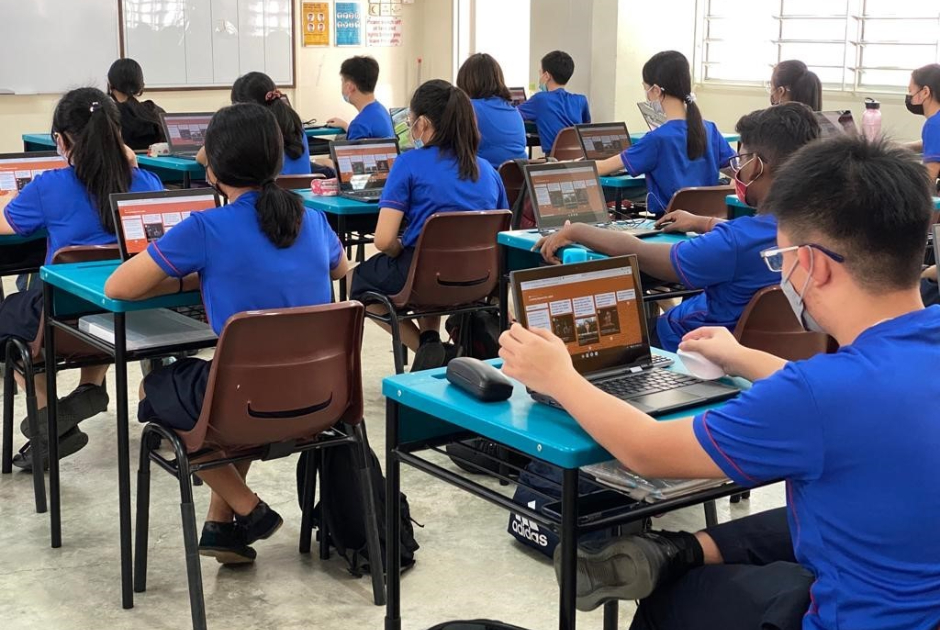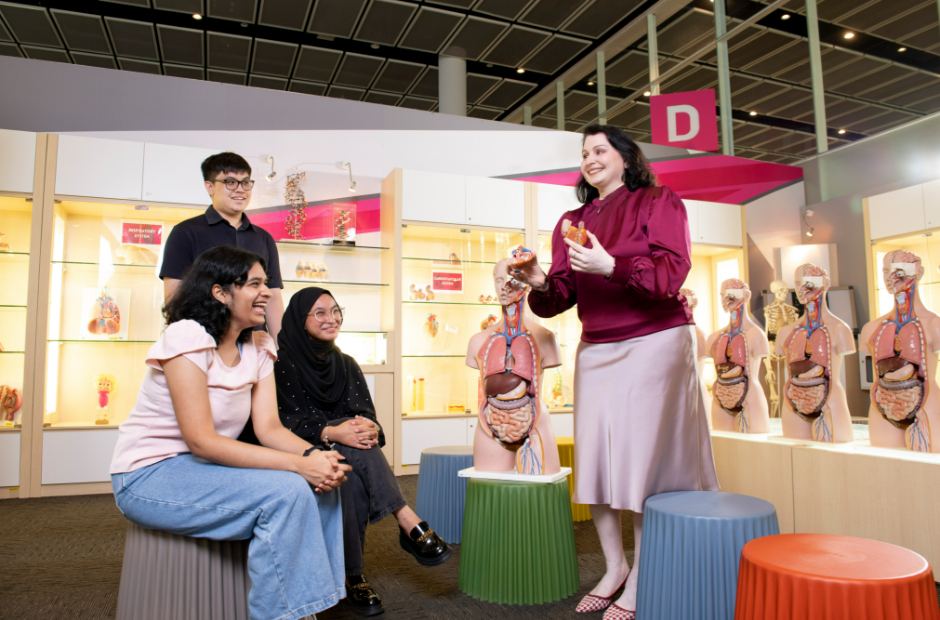Yap Hui Ching Michelle, Fairfield Methodist School (Primary), Outstanding Youth in Education Award 2021 Finalist
I still recall the day vividly: Friday, 7 February 2020. News of COVID-19 was spreading like wildfire and striking fear in our hearts about how it would change our lives. I encouraged one of my Music students, Jacob Neo, to pen his thoughts and emotions about this in a song and instantly he said “Yes!”
Raising Empathy through Songs
I had introduced song writing in the Music curriculum at my school and in 2019, I incorporated a song writing module called “Fairfield Song Stories” within the Learning for Life Programme (LLP). I feel that the process of song writing – research, imagination, putting oneself in another person’s shoes, articulation – cultivates empathy, which is a key value in a VUCA world.
What I did not expect was that two hours after our discussion, I happened to meet Jacob along the corridor and he walked towards me, waving to me with his notebook in his hand and exclaimed excitedly, “Ms Yap, I’m done with the chorus!”
That was how “Singapore, Unite as One” was born, a song to uplift our healthcare workers and fellow Singaporeans during the pandemic.
The online success of the video took us by surprise. But what surprised me more was how Jacob empathised so well with others and managed to depict their feelings of fear and isolation in the song.
To outreach to the community, a second video was created with the support of my school leaders and team during Circuit Breaker in 2020. The song “Singapore, Unite as One” performed by the Fairfield Virtual Ensemble brought the Fairfield Family together online, comprising 950 students and staff from both Fairfield Methodist School (Primary) and (Secondary), board of management, parents, and alumni (where a participant was from Warsaw, Poland!).
Through our LLP song writing module, we have amassed 14 original songs in our teaching and learning repertoire. Our students have also been recognised and they have attained awards since 2018 for three consecutive years for the SYF Youth Station Project, a national song writing endeavour.
Making Music Learning Fun
When I was 17, I made the life-changing decision to be a teacher. I had always been a shy student, but when my English teacher asked me to share with my classmates why I took Music at the O Levels, I felt so much joy in doing so. I knew I wanted to impact lives through Music. Subsequently, I joined the Ministry of Education. To me, teaching is not a profession, it is a privilege, a responsibility and a commitment to serve, and I have never looked back since.
“How do we engage our students better?” is a constant question on my mind. In teaching Music, I am a firm advocate of the ECA approach: Experience, Concept and Application. Music concepts may come across as dry to students, so allowing them to experience the wonderful rhythms and sounds of music first helps them to internalise the concepts before they apply them through performing and creating music.
For the Lower Primary levels, the focus was on Music and movement and establishing strong fundamentals while making lessons fun and relatable. To teach rhythm, for example, I used plastic fruits and colourful ice cream sticks to represent rhythmic syllables and notation, so students could create a ‘Fruit Composition’ together. When they danced, they waved colourful sashes to the music, which helped them to pick up music concepts like phrasing – it was also a pretty sight to behold!
For the Middle Primary students, Dancesport, a form of ballroom dancing was introduced as part of their LLP. That gave them exposure to other cultures, such as Latin American music and dance genres like Samba and Cha-Cha. Through partner dancing, students also developed social skills such as teamwork and coordination.
With my students in the Upper Primary levels, I leveraged technology by creating virtual classrooms on Microsoft Teams. I also introduced the learning of digital music via the GarageBand app and this ignited the interest of students without music training to play their favourite instruments using the virtual piano, guitar and drums.
As we move towards inclusive classrooms that embrace all learners, and an inclusive society, I feel that empathy is also a key value behind the process of inclusion.
In 2019, I seized the opportunity to take learning beyond the classroom and forge partnerships with two Special Education (SPED) schools, Grace Orchard School and Lee Kong Chian Gardens School (MINDS) by embarking on a five-month-long collaboration. That afforded our students the opportunities to interact, co-learn and co-perform with SPED school students in both Visual Art Club and Handbell Ensemble CCAs.
Despite the initial resistance due to challenges in communication, bonds soon formed between our students and the SPED school students. It was heart-warming to witness scenes of students from both schools holding hands and encouraging one another backstage before their joint Handbell performance.
Re-discovering my Voice as an Arts Educator
It is my wish to deliver a more holistic arts education where students can see the interconnectedness between the arts such as Visual Art, Dance, Drama and Music. I also hope for students to develop a lifelong appreciation for the arts and contribute their talents to society. Over the years, I have found it important to periodically revisit my purpose and beliefs to reflect on my teaching practices and to re-discover my teaching voice. Clichéd as it sounds, teaching is heart work because we are moulding the lives of our young charges.






